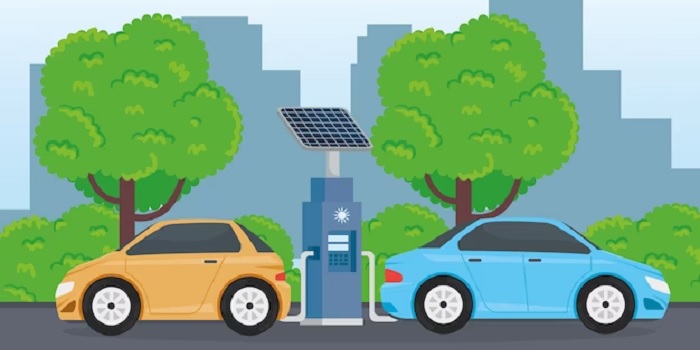Understanding the adoption of ZEV vehicles

When it comes to fleet electrification, government entities have a considerable amount of work to do. A report by the U.S. Government Accountability Office (GAO) shows that some progress has been made, but the efforts are falling short in many areas.
Most work so far has focused on fleet and utilization assessments, with a bit of phasing in of electric vehicles (EVs), along with preparations for expanding the charging infrastructure. However, according to the GAO, substantive change will require more than just mandates and an accelerated pace to meet climate targets.
ZEV adoption
The transition to zero-emission vehicles (ZEVs) is underway. The federal government acquired 13,000 light- and medium-duty ZEVs in 2023, and a dozen states have adopted advanced clean car regulations to accelerate EV adoption. These mandate that auto manufacturers adopt increasing numbers of ZEVs and stricter standards for gas cars and passenger trucks to accelerate broader use.
A memorandum of understanding signed by seventeen states and the District of Columbia has set a goal of 100% ZEVs by 2050. Some municipalities have their own mandates. For example, New York City requires 4,000 electric vehicles in the fleet by 2025 and all vehicles to be ZEVs by 2038.
Benefits of transitioning fleets to ZEV vehicles
More government entities transitioning their fleets means more benefits, including those relating to health, the environment, and the economy.
Positive effects on climate change, pollution, and health
"Limiting the impact of climate change is only possible if we transition to cleaner, more energy-efficient vehicles," said Matthew Rodriquez, California Secretary for Environmental Protection.
Studies show that the adoption of ZEVs results in cleaner air and less pollution, producing improved health. A Keck School of Medicine at the University of Southern California study demonstrated that for every twenty ZEVs per 1,000 people, there was a 3.2% drop in asthma-related emergency room visits and a reduction in NO2 levels.
Economic advantages
For government fleet managers, there are significant cost savings over the long term compared to gas-powered vehicles. It also supports building EV infrastructure, stimulating high-tech manufacturing, and creating jobs to sustain the EV industry. More than 3.3 million people already work in the clean energy/clean vehicle industry.
“Zero emission vehicles can deliver big gains for our environment and economy," said Ben Grumbles, Maryland Secretary of the Environment.
Leading by example
For government entities, embracing ZEVs demonstrates a commitment to building sustainable solutions. A public fleet of ZEVs helps mainstream adoption and showcases zero-emission fleets' viability in real-world use cases.
It also helps meet broader environmental goals and climate targets. Considering that nearly 60% of Americans believe that state-elected officials and the federal government are doing too little to reduce the impact of climate change, ZEV adoption can help influence public perception.
Challenges to accelerating ZEVs in government
Two key challenges are slowing ZEV adoption: cost and capacity.
ZEVs are more expensive than internal combustion engine vehicles, which makes procurement more costly. In times of tight or declining budgets, this requires a greater commitment from government entities to fund initiatives. Other expenses come from retrofitting and training for maintenance and operations.
There is also a current lack of charging infrastructure available to support ZEVs. Construction is expensive and can take more than a year to complete after site selection has been finalized. Most local electric grids also need modification to handle increased charging requirements.
Another challenge is a steady supply of inventory to replace the diverse use cases for government fleets. Automakers are currently cutting back on EV production due to slowing consumer demand. For example, Ford just paused construction of its $3.5 billion EV plant in Michigan. Despite $1.7 billion in government incentives, Ford said that it was unsure that it could operate competitively and profitably. GM and Honda have also canceled programs.
Overcoming ZEV adoption challenges
Public proclamations of sustainability goals only work when a funding mechanism is in place to enable them. It also requires a commitment to planning, designing, and executing fleet electrification. Governmental units need to:
- Plan: Focus first on laying the groundwork through training staff and exploring infrastructure upgrades like charging stations that will support adopting ZEVs.
- Design: Next, weigh options for acquiring ZEVs, whether purchasing or leasing, and map out details like charging needs and optimal station placements with the help of experienced contractors.
- Execute: Finally, begin acquiring ZEVs and installing supporting infrastructure in phases, leaving room to scale up vehicles and charging capacity over time as adoption expands.
As part of each phase, procurement will play a significant role in managing budgets and meeting targets. Cooperative contracts can help relieve administrative and cost burdens.
Sourcewell has ready-to-use contracts for ZEVs, telematics, and sustainable services. Leveraging the bulk buying power of more than 50,000 government and education entities, its competitively sourced contracts provide significant savings.
The electrification of fleet vehicles can save city leaders and public fleet professionals money and time—and accelerate the progress to net-zero emissions in government fleets. Is your public fleet ready to transition to electric vehicles? See how Sourcewell can be a trusted partner in your EV journey.


